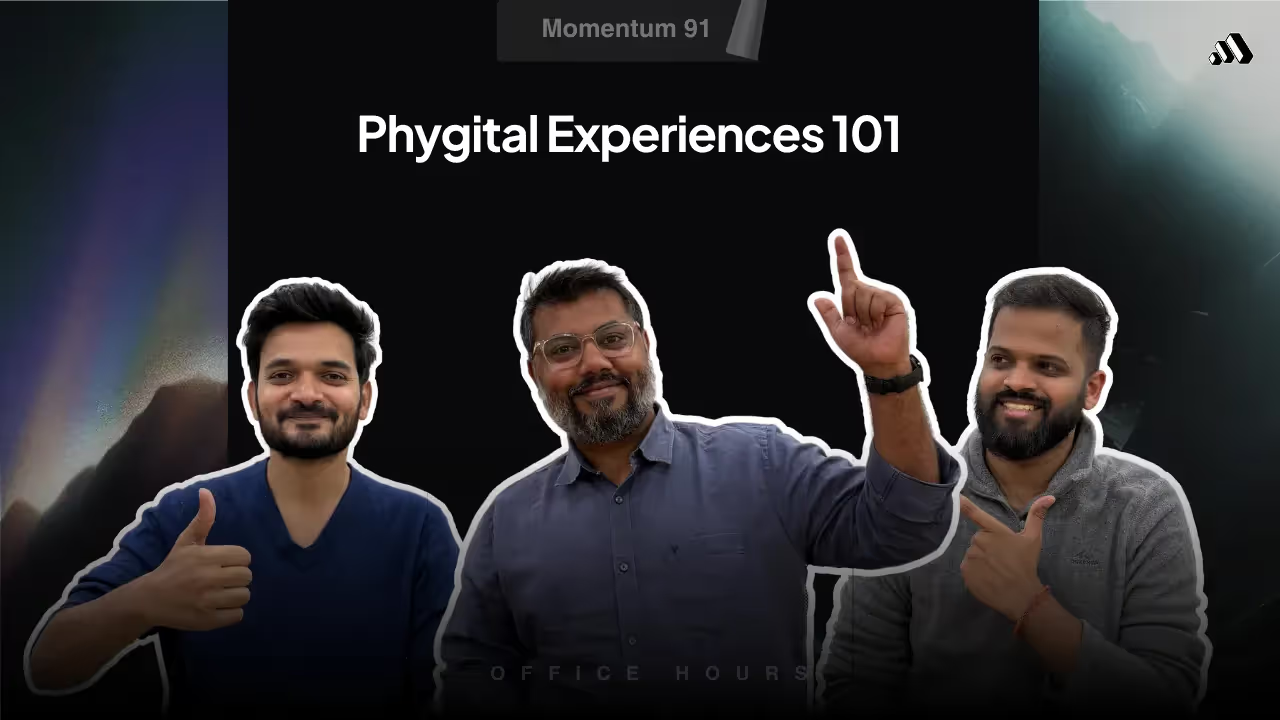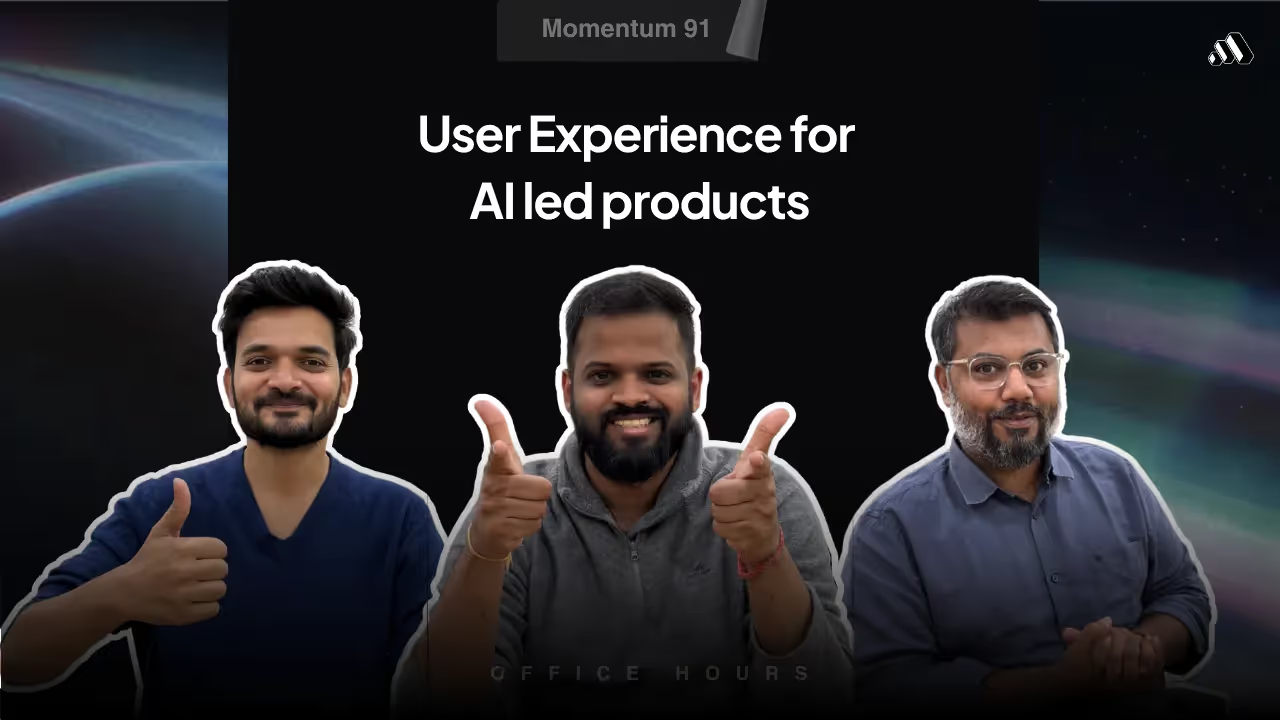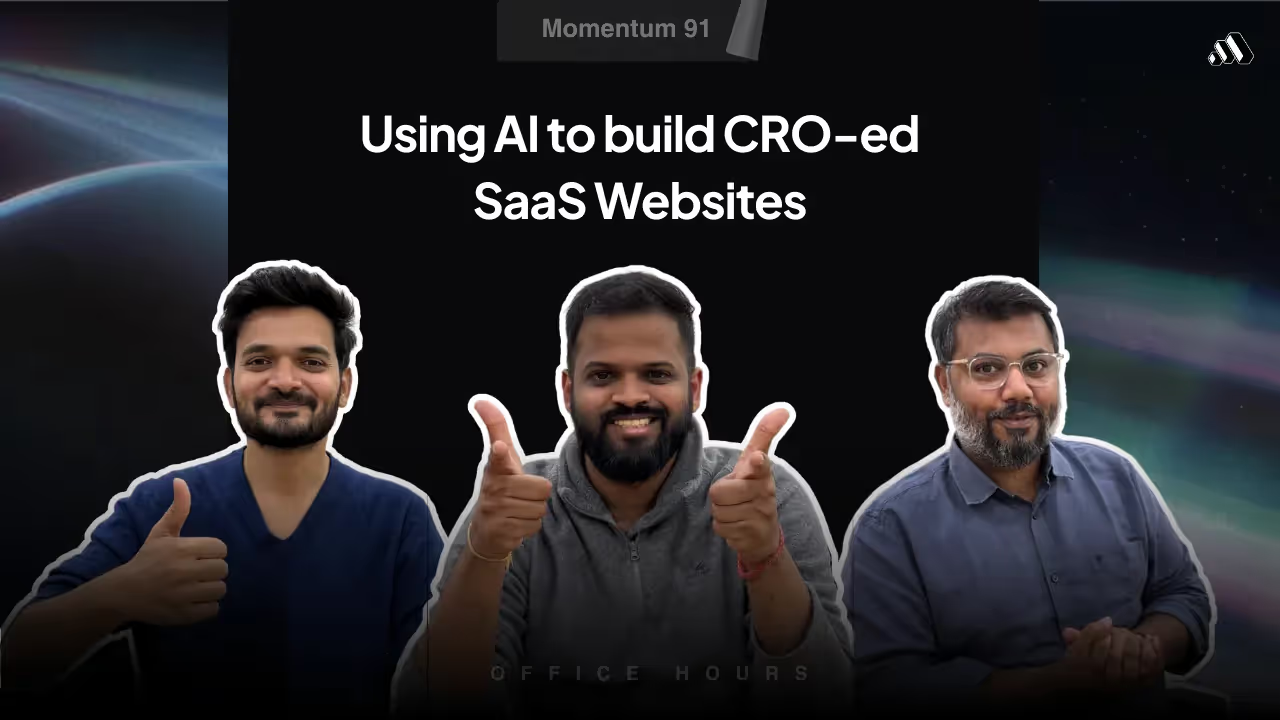How Adaptive Hiring Works
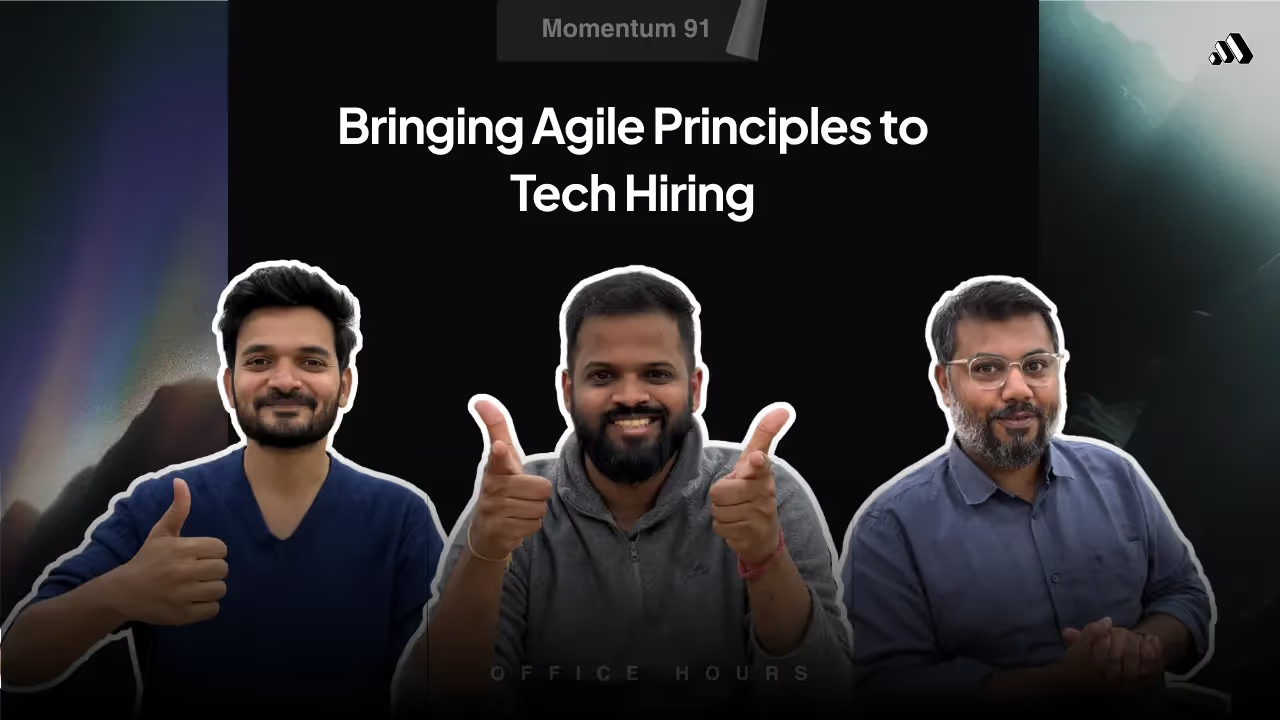
Introduction
In this conversation, Yash Shah and his co-founders discuss the concept of Agile Hiring, focusing on its adaptive nature and how it can be applied in various business contexts. They explore the differences between Agile and Adaptive Hiring, the frameworks that can be utilized in larger organizations, and the metrics that should be tracked to measure success. The discussion also highlights industries that benefit from Agile Hiring, tools and platforms available for implementation, and the importance of integrating Agile hires into company culture. Finally, they provide guidance on when to choose Agile Hiring over traditional methods, emphasizing the need for flexibility and global talent acquisition.
Key Takeaways
- Agile hiring emphasizes flexibility and adaptability in recruitment.
- Adaptive hiring can accommodate both short-term and long-term needs.
- Hiring time in adaptive hiring can be significantly reduced.
- Seasonal businesses often benefit from agile hiring practices.
- Global talent acquisition is essential in today's market.
- A Chief Happiness Officer can help maintain company culture in remote teams.
- Mid-market companies are increasingly adopting agile hiring methods.
- Metrics for success in agile hiring differ from traditional hiring metrics.
- Tools like Andela can facilitate agile hiring processes.
- Agile hiring is becoming the preferred method for modern recruitment.
Transcript
Okay, so we are live and I made a small mistake. I just changed that. It's not, it was, it is not a secret because it already says in our scheduled event as to what is the topic of the conversation, but it's still better if we just start as people and then sort of bring the topic of conversation to today. So.
We have a few people joining in. So hello and welcome to Momentum Office Hours. My name is Yash and I'm joined by my co-founders Jay and Koushik to discuss the of the week, which is how agile hiring works. Our goal is to provide you with actionable insights and practical strategies that you can apply to your own business. Throughout the session, we encourage you to engage with us by asking questions and sharing your thoughts. This is a fantastic opportunity to learn from each other.
and gain new insights that can help drive your digital initiatives forward. Let's get started. Jay, Koushik, how are you doing? Good. Working from home. You're from home? Yeah. Why are you working? You're traveling. You are not with us in office. But for sharing insights on the topic that we have for today, which is how agile hiring works.
Even though Koushik is on some sort of travel, don't know what to call it. But he's joined us to share his insights as well. How's the travel going Koushik? We get lots of food, lots of people. Take it from me. Lots of food is not good. You can take that from me. But lots of good food and lots of people, both of them are good, like good food, good people. Yeah, good food, good people.
Good thing is when you are, I don't know, I don't do work from home that often but so when you are working the food comes to you right so that's the best part and like they constantly come and ask you what do you want, do you need something they think you actually doing something really important which you are, which I am but yeah for them it seems like a complete deal breaker he is doing so yeah
That is a good save and for people who may be wondering as to why does Koushik does not work from home it's not because Koushik doesn't like work from home it's because Koushik is not at home. So given that Koushik is not at home he's always at work he does not get the opportunity to work from home. So he's always at the office. But let's come to the topic right. What is, I know Agile project management. I've used that
I've used that term and I've abused that term as well. But what is Agile Hiring? Tell us a little bit about it. Agile Hiring, Adaptive Hiring, it's sort of the same word trade-offs. But the thing is, it primarily follows the same principles of what Agile as a concept means, Being flexible, where the whole process keeps changing based on priorities and requirements and it keeps adapting and changing. that
primarily adaptive hiring as a concept takes from that. Now to give you a little glimpse of it, I'll stay with it with an example, right? Let's say I'm a tech company who has outsourced my product development work to some vendor in India, right? So, and now certain and they have developed the product, the product is out, they're also managing the product from there. I'm handling the business part or the sales part as a non-tech CEO of the company or something of that sort.
Now let's say that I want to introduce AI features within my product. Now it is very tough for me to know is my existing vendor the right person to handle this task of having AI engineers within the team. In adaptive hiring method, you first start with identifying the departments or the tasks within your company which are
which are not worked upon, where you need some sort of experts to jump in and get the job done and that's where the requirement and the priority has changed now compared to what it was previously. Now in an adaptive hiring method you would have similarly companies who would help you to onboard these experts across the globe. it borderless and having it remote is actually a biggest
help in this case. You might have a really good expert somewhere in some part of India or some part of a different country and you could hire that person for that particular job. So it is also just like how agile methods have a time constraint where it is a short interval time. The adaptive hiring method. Sorry, I was on mute. was saying yeah, so there are sprints and stuff like that.
Similarly adaptive hiring also has a time constraint. So you decide whom do you need, till when do you need for the specific task or a specific project that you want to accomplish. So in that case Koushik, does it mean that agile hiring is more about, does it anyway indicate it's more about a temporary hiring or also over here that timeline is fixed on when the person is needed or it's more about this.
adapting to the new hiring needs and just trying to fulfill the same. Can you try to give the difference between these two? So it's only depends on a company. If I'm a company who is at a very large scale, it's more adaptive in process for me, where my needs are constantly upscaling and downscaling depending on what my current needs are. I might need a compliance specific role that emerges in my company, which needs something to be worked out in
next coming five, six months. And after that, don't need that particular person, but that is of extremely high priority at this particular five, six months because without that, nothing is going to work for my company. could be, we have seen such sort of situations many times, right? But later I could probably have a front end, like an entire full stack team with me. But I probably want a, you know, ML DevOps person inside my team now.
because I have developed an AI based product. Now, ML DevOps is an emerging, or MLOps basically, is an emerging set of DevOps engineers who has expertise in machine learning, which is very specific, very niche that I'm targeting. At this case, I'm actually adapting and I'm expanding my pool of people, where in the other case, I specifically wanted one person only for a fixed period of time.
But without that, nothing can work in my company. So I need to get that done first. So it's both at the same time. That's whole point of adaptive hiring process is that it tries to accommodate both the situations that are.
So, would it be fair to say that like for, of course, for things that maybe we may not need recurringly or they may be short term in nature, we could do the same like agile or adaptive hiring for contractors and then for things that we believe are going to be long term and for things that are there to stay and are going to be recurring in needs, we'll go for adaptive hiring or agile hiring but for full time team members, right? If that is
If that is true, who makes the... So like in larger organizations, so let's assume that for a founder led small company, which is let's say 20-25 people, this is very, you know, I can imagine that working. But for a larger organization, let's say 200-500 people company where there are HR departments and then requests coming from different departments and stuff like that, how do you...
Are there any frameworks, much like how you have Sprint for Agile project management, are there any frameworks that you come across that help such, I wouldn't qualify them as large also, I just say mid-market. But for these sort of companies, are there any frameworks? Yeah, so you first, there are like two to three step process where you first start with identifying which particular project is something that is
you know, that you want to take up first. So you don't start with a bigger setup immediately in this case, you start with a testing level where you begin with an initial team where you see with respect to like for example in my organization, which one team that has been that absolutely didn't produce any output because I didn't have enough skilled people in the team or the existing pool of people that I have are not currently, neither they have bandwidth or the skill.
to accomplish that. I take that as a particular task at the initial level and then I start hiring based on skill as the sole item across the globe wherever it is. So you would have partners just like how you have vendors where there is one vendor who would have everything. You have multiple partners, tech partners who would help you to hire these talents across the globe and organize the team for you where this test team is initially on.
Now, so this is very good from a skill perspective because like I said, could have my one, if only skill is my priority and cost is not my priority for that particular project, project's accomplishment or success, then I would look out for even a costly resource at a very different country or at a different place who is very skillful at it. Okay. And that particular
company with whoever is trying to do it will be able to match this through they will have certain systems or database of these candidates already with them and will be able to match it to that. Now let's say that I say that skill as well as cost both are my considerations where I need a skillful people at the same time at a comparative cost within my budget that is there that accordingly the global pool is matched and brought in together. So this is where it I think in your question
essentially we're trying to differentiate between how is this different from existing set of hiring methods that is there. But in traditional methods, hiring methods, as a vendor, I already have a pool of people and within them I'm hired and within them I'm trying to provide. Here across the globe based on your requirement, is getting adjusted and helping you hire. So usually the people who provide adaptive hiring have a system.
have a product with them in place which helps them to map all these things together and provide you. So in this case, are there any, since this is a very specific need also for a specific amount of time, are there certain metrics that are different to be tracked upon when you know, know, onboarding someone or recruiting someone or hiring someone for this particular set of role in agile hiring model, which are not there in the traditional one. If you could share a little bit about
parameters to be tracked upon because since it's for a specific amount of time but the accountability is really high compared to even the traditional hiring model right. Are there any ways where someone if they are looking for agile hiring they need to you know measure more factors rather than just the existing ones which they do in traditional hiring? Yeah so the first thing is the hiring time that you want to check up with this particular
platform or the vendor, whoever is providing your adaptive hiring. Because the whole point of adaptive hiring is about having a faster hiring time. In traditional hiring times, have like roughly 8 to 12 weeks of time for you to hire. Whereas in adaptive hiring, since there is a smart system that is helping you to match from the existing pool of people, it should somewhere take you around like 24 to 72 hours.
within which you should be able to at least map this pool of people initial, initial pool of people for you to choose from that is there. And that is one metric for you to keep in mind with. Second point is that after hiring, what is the high skill talent turnover? So adaptive hiring works really well when you have a very specific skill based need. And for how long do you need that particular specific skill based need?
So how many high skilled people are these platform, is this platform providing or do they already have in their pool? And how many of them actually turn out to be converted by these companies is another metric to take care of. Because in traditional hiring, one common problem that exists is that access for extremely good high skilled people is not something that you can
In practical, it's very tough to make sure that the traditional hiring methods can map and get you the high skill person always. So in this, adaptive hiring, the whole point of this is the people also who are enrolling within this know that they are coming in for a short period of time for a specific kind of a task to be done. So that is why this works out well.
And so, do you have any examples of what industries or what sectors is this really good for? So one that I can think of are cases where the requirement of team members sort of significantly changes for a very short period of time. So generally seasonal businesses. So as an example, a friend of mine runs a festival
that he organizes once a year. During the rest of the year, the team is significantly small, but when the festival comes around, you know, three, four months before the festival, it happens at a fairly large scale. So for that, the team sort of ramps up for a very short period of time. For such seasonal businesses, I understand it. Are there any other sort of industries or businesses where you've seen this as a practice and maybe this is extremely...
the only way that they would do hiring that actually ends up working well instead of a fixed head count sort of an approach. So there are again two pointers here. One is with respect to I have a seasonal or a very particular requirement like just like you said. So we also have a we also know of an event based company where it conducts a particular event at a very large scale.
and specifically at that particular scale, then at that particular point of time, they would be needing people on field and as well as off field. So we are talking about on field people who are managing and managing the crowd, managing the tech and managing the ops part, managing the operation. The hospitality and even before the event also there are a lot of activities like three, four months before that. Exactly. And there is a backstage team, which is also managing those people who are in the field. So
you need to hire them also and they have to be aware about how to use the tech that you have developed for this particular product that is there. Now there is also they should be aware of the compliance parts so they so usually there is some amount of induction that goes through that is only specific that for that particular event or that particular time period of when this particular thing is happening.
So all these things are, so you might want to get people who have gone through a similar kind of inductions previously or who are aware of what is being done over here. So this is one set of people or one sort of a use case. And there is another use case where, like I mentioned, there is a specific technology, like for example, blockchain technology or ML Ops, or crypto tech. So there is a specific tech we are talking about.
where my existing vendor or existing partner, my tech partner might not have the currently might not have the right person to do it or does not even have the capacity to get that person to do it for me. In that case, I specifically need that particular individual to jump into the project. So then I will go to these sort of vendors and get it done. So it is that specific of a thing like
We actually had, luckily we had an engineer who knew it. We had a similar situation where we had one of the client who wanted someone with expertise in NVIDIA's tech stack. So we had someone in office, luckily, who had understanding of NVIDIA tech stack and was able to do it. But let's say that if there was no one, it is a very specific need, very specific requirement that is there. The rise of adaptive hiring is happening because
Tech is becoming more niche as we go forward. The requirements, like for example, 10 years ago, there was no role called as a prompt engineer or even higher, there was no role called as a prompt engineer. Now it is one of the top seek roles that we are seeing out there. MLOps didn't exist three years ago. Now we have MLOps. So we are seeing rise in new roles and requirements. To accommodate that,
We need to, it's where I think hiring and skill should, talent hiring should become borderless more and more because you have a requirement and you expecting it to be locally available is not going to happen anymore. It should be beyond pin codes and zip codes. So yeah, so that's primarily what it is. Thanks Koushik for explaining that. So largely at times,
a business that is being run at times comes to a position where they actually need this agile hiring or adaptive hiring for a particular specific role. It usually comes after reaching a certain stage. So if someone is actually looking for this specific role for the first time, where should they usually go to? The thing that has been happening so far now is they usually post the requirement in Upwork or in their socials and things like that.
or any other marketplaces where they can you know find the right set of vendors and lot of people come in but now since this particular requirement needs to be fulfilled in a very short span of time, would you recommend any methods or any tools that they should utilize for the same? Yeah, so one very trusted and very frequently used platform that does this is Andela. Andela has their own product also which does this. So they also have
They have multiple products for the solutions that they are offering. They have multiple products that their clients could use to manage. So from the stage of initial hiring till the stage of after hiring, how to manage this global talent that is across and even their payment process, payroll process, everything could be managed from one single source of truth as a platform. They have a similar kind of a setup that is there. That is one known set that is there.
As of now, as a solution provider who could do, this is one person who we know of as of now. But there are also other parties, other platforms that are there who are doing it without the platform, but at a much more smaller scale where their clients that they are reaching out like for example, GitHub is a client of Andela. But if you look there are at bottom level, we have other partners also who are also doing a similar kind of a thing.
trying to pull in multiple talents but probably very specific to their region. So very specific to India or combination of two or three regions. India, Indonesia, Bangladesh or it's a combination of regions that they are trying to do. Philippines, Vietnam. Yeah, exactly. So what we are seeing now is that previously let's say there is a vendor or a tech partner who is only India specific. The advantage is that
It is cheaper and I can give you more people for the cost of you hiring for the cost of hiring five engineers you can get 10 engineers here. So it's more of a quantity game previously. Now if I combine India, Philippines as well as Bangladesh, I have three regions now. So it is not quantity game. It is I'm saying that I have three regions and I can get you the most skillful person. So that is the game that now certain companies are.
So it's still the cost aspect, but it is not the only thing. But the constraints have now been lifted. So then here's a question which may not be strictly adhering to agile hiring, but I'm wondering it and I'm sure people who are watching who might be leaning towards agile hiring will have this question as well. As to, let's say if I run that organization that is going to start agile hiring,
no constraints of finding good people and talent locally. My first concern would be how does that person get integrated into my team's culture? How does that person sort of align with our vision, mission, what we are trying to do? So what are certain supporting frameworks that you also need to put aside from
you know making a decision that we want to do adaptive hiring or agile hiring. What are certain other frameworks that we need to put to make sure that it actually ends up being a net positive and actually ends up working and it delivers on the promises of better outcomes. So if you are someone who is hiring through this method you need to make sure that the partner through which you are trying to hire from would set up certain roles for you to manage these
the remote concept to work well. So that is we're talking about a client success manager or an accounts manager from they would call an account manager but it is a client success manager who's essentially trying to make sure that like for example let's say I have my tech manager as well as the project head in some country and I have my HR also in my own country.
And I have only my SDE 1s and SDE 2s I have hired through this tech partner in India, in Indonesia and Bangladesh. And they all are in different places. It is the customer success manager's role to constantly coordinate with the project manager as well as the HR and the tech head that is in a different country to make sure that these three are in sync and these three are adhering to
the processes that have been placed by them, as well as their company policies that are there. So while onboarding them itself, it's the HR as well as the customer success manager over here will place frameworks in place such that these people know what they are getting into while they're getting hired. This is one aspect. And then there are chief happiness officers. So this is another new role, right? Like which didn't exist until quite some time.
Yeah, I'm not like what is a Chief Happiness Officer? So I thought I was supposed to like being happy as part of a team is my own job. I mean, it's my job to be but what's a Chief Happiness Officer? Yeah, so unfortunately not everyone is happy in the companies. So the whole point of a Chief Happiness Officer is that like if you take a scenario where everyone is in office, it is still tough for HR to make sure that everyone is you know
Apart from work, is also that culture of the company that is there, that is being maintained. Now, essentially any company culture should aim towards making sure that, making sure to an extent that all the stakeholders involved are happy at least. So that is at least the aim that should be place. You can have any kind of a company culture process in mind or in place, but at least it should aim towards that. Now, even everyone being in office, it's still a tough
thing to do. So when it becomes remote, it is much, much tougher to make sure that everyone is in line with this particular thing. So you can think of Chief Happiness Officer as an extension of your HR person. Or if you don't have an HR person, he or she is your, technically is your HR person who is managing all of this remotely. Right? So it is a specific dedicated person allotted to make sure that
These activities are coordinated along with the HR team and captain place. So you can, it's an extended HR, but much more a glorified role name. But yeah, but when a dedicated role is assigned for that, by now the question is why can't a HR person do it? Why do we need a CHO person to exist to do it? Is that a HR person with everyone having within office itself cannot do it efficiently.
In case of an extended team, it becomes more tougher and tougher. So just to make sure that it becomes easier for them and they can plan. So your HR person becomes more of a strategist or a checker where these people are the CHO will be the person who will be making and implementing and making sure that things happen. that's the basically the framework. So these are certain roles that comes up like and
As the quantity increases, will have multiples of them. Like if I have like for every 200 to 300 people, I might need one customer success manager. So if I start having 400 people or 500 people in my payroll doing different things, then I might need four or five customer success managers, or I might need six or at least five to six CHOs.
if it is in thousands of scales, right? So if we are talking about a complete remote team in that scale, then this would be a situation.
Thanks for explaining it in detail Koushik. Before, I could see that we have just a couple of minutes left so I wanted you to ask specific question with respect to difference since you already mentioned what's the difference between the traditional hiring and now why the trend is moving towards agile hiring or why this new thing has started right? Could you give a basic outline on when should one approach towards traditional hiring and when should they focus towards the agile hiring approach?
One primary thing you already mentioned is what specific need for a limited time, but are there any other factors? Also, is there a budget concern that should be taken care of if you could just give the guide so that the founders who are usually at the level where they could be needing this and find it helpful? So if you are a smaller company who have just started with a product idea and still working on it, shipping it.
is the first task that you want to accomplish. So adaptive hiring might not be that much of helpful because here you could still do it at a much lower cost compared to in adaptive hiring. We are talking about companies who are at a mid-market level or much higher than that, who are working remotely, who are open to working remotely, who believe in the fact that, you know,
Skill is very important for me. I don't mind my team being across the globe. So those sort of companies who prioritize talent and skill over you know anything else and having the best people for them to get to get the job done would mostly want to go for a child hiring because it is not correct to think in the current scenario that
the smartest people are available next door. They are not. So they are across the globe and with the tech advancements that we have in communications that is available with us, we can take advantage of them and have the teams across the globe. That is the whole point of the advancing as a human being. So it is the fact that we can improvise the communication part.
But it is the companies at this level who specifically have multiple iterative needs and multiple requirements at different stages continuously. So the whole, if you think of it, the whole concept of agile project management came in because of these companies, right? Because they constantly have requirements and priorities changing all the time as a company across different branches, across different regions that are there.
Google, the problems Google America has versus the problems Google India has are very different. Yeah. Right. So this is exactly where adaptive hiring comes in. So who knows, probably the problems of Google India could be solved by a team in Philippines. In fact, there is a good example when Uber wanted, Uber was trying out this problem.
to solve this thing where you know when there is airport taxi concept came in, was trying to solve that and they actually had it like a internal Uber team competition kind of thing and the team that actually won the competition is in the team in Philippines right so the design team as as the tech team in Philippines was able to do it. Now let's say that Uber didn't have a global team. Their chief happiness officer is doing a good job.
Exactly. Sorry, please continue. So someone in San Francisco identified the problem and floated it across the globe and someone in Philippines is trying to find a solution for it. This was able to happen because you have talent across the globe who can find solutions for the problems that you have. Now let's say that you don't have talent across the globe, then what is the point of you being a bigger company when you have the
when you have the power to access the entire global talent that is there. So that is the whole point of this. That these guys, the companies at this level will have these problems and their problems can be solved through this process.
Awesome, man. Thank you, Koushik, for sharing insights on how adaptive agile hiring works. This brings us to the end of our conversation today. We will now let you go back to whatever it is that you are doing while you are traveling. And for all the people who joined us on LinkedIn or on YouTube, thank you. Hope you found today's conversation valuable.
and if you did then please consider subscribing there's no point pretending right so all of us all the three of us you everyone all of us work for algorithms and when algorithms are ignored they get cranky you subscribing to our channels is just going to let the algorithms know that we still believe that we are working for them
and they just be nicer to us and will show up ahead in your field. So in spirit of continuing to work for algorithms, please hit the subscribe button. And now I'm done with my shameless plug. But thank you everyone for joining in and we'll see you again next week with another topic, with something more insightful, something more helpful that can help your business grow.
Again, thanks for joining in. Until next time, bye-bye.
The inbox update you’ll never want to skip
A quick catch-up with ideas, wins, and tips worth stealing, straight to your inbox every week.
The easiest way to reach us.
Share your details and we’ll get back within 24 hours.
Office hours
A plethora of insights,all in one place
From strategy to execution. All the big ideas, practical guides & fresh perspectives that’ll help you scale with confidence
Ebooks
Comprehensive guides that break down the shifts in business and technology, Helping you lead with clarity.

Office Hours
Your direct line to our experts. Practical advice for scaling, right when you need it.
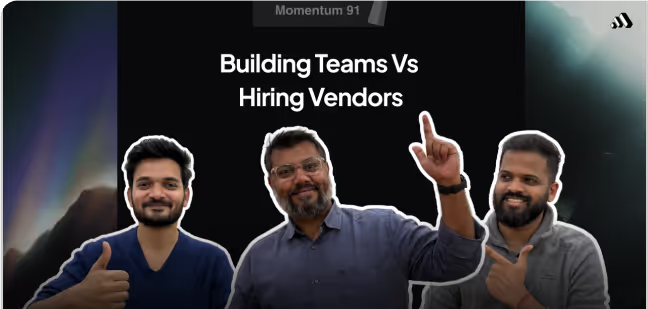
Reports
Data-backed perspectives on where industries are headed, giving you the foresight to make bolder moves.
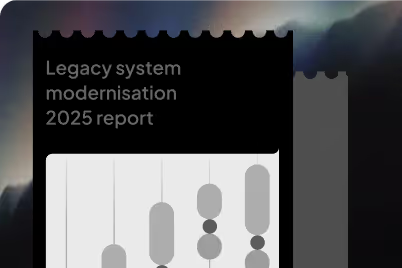
Newsletter
A quick catch-up with ideas, wins, and tips worth stealing, straight to your inbox every week.
.avif)
Podcasts
Conversations where you get to know everything from the ones who know it best.
.avif)
Your Offshore Development Center, Done Right
Access top-tier global talent, enterprise infrastructure, and complete regulatory compliance through our proven model.
Start Now




